- Author Matthew Elmers [email protected].
- Public 2023-12-16 21:49.
- Last modified 2025-01-24 09:17.
In the 90s of the last century, the leadership of the PRC set a course for a radical modernization of the armed forces. First of all, this affected the air defense and air forces, which, along with the strategic forces of nuclear deterrence, play the greatest role in ensuring the defense capability of the state and most fully reflect the level of development of scientific, technical and production and technological potential.
After the normalization of relations between our countries, China has become the largest buyer of Russian combat aircraft and long-range anti-aircraft systems. But for the effective management of the actions of fighters and anti-aircraft missile systems, not only modern ground-based radars, coupled with automated control and information exchange points, were required, but also flying radars that combine the functions of air command centers - early warning and control aircraft.
In the Soviet Union, AWACS aircraft based on the Tu-114 airliner appeared back in the 60s. But in the PRC, an attempt to create a "flying radar" based on a long-range Tu-4 bomber ended in failure, and there were no such machines in the PLA Air Force until the beginning of the 21st century. In the late 80s in the USSR, an export modification of the AWACS aircraft - A-50E, with a simplified radio-technical complex and without ZAS equipment, was created specifically for foreign customers. However, the Chinese specialists, having familiarized themselves with the radio-technical complex of this machine, built on not the newest element base, considered that it would be more rational to use the base IL-76TD platform, combining it with more modern Israeli-made equipment. After quite lengthy consultations, in 1997 a tripartite contract was signed for the creation of an early warning aircraft complex, which received the preliminary designation A-50I. The contractors were the Israeli firm Elta and the Russian Aircraft Company named after V. I. G. M. Beriev. The Russian side undertook to prepare a serial A-50 for conversion, and the Israelis were to install an EL / M-205 PHALCON radar, a data processing complex and communication equipment on it.
Unlike the Soviet A-50 AWACS aircraft, the antenna of the Israeli EL / M-205 radar was supposed to be placed in a fixed disc-shaped fairing with a diameter of 11.5 m (larger than that of the A-50), with three AFAR forming an isosceles triangle. According to the characteristics announced by the manufacturer, the Israeli radar of the decimeter range (1, 2-1, 4 GHz), in combination with high-performance computing facilities and special noise suppression devices, was supposed to provide the ability to detect "difficult" low-altitude air targets: cruise missiles and aircraft, developed with using technology of low radar signature. In addition, the Chinese AWACS aircraft was supposed to be equipped with modern electronic reconnaissance equipment, which made it possible to monitor ground and ship radars and listen to radio communications. The cost of one Il-76TD aircraft with the Israeli RTK was $ 250 million. In total, the PLA Air Force intended to order four AWACS and U.
The practical implementation of the joint contract began in 1999, when an A-50 from the Russian Air Force with tail number "44" flew to Israel after dismantling the Soviet radio-technical complex and overhauling. According to the schedule, the first AWACS aircraft with an Israeli radar, an electronic reconnaissance station and communication equipment was to be transferred to the Chinese side at the end of 2000. But already during the implementation of the program, the Americans intervened in the matter, and already with a high technical readiness of the complex in the summer of 2000, the Israeli side announced its unilateral withdrawal from the project. That, in addition to sensitive financial losses, negatively affected Israel's reputation as a reliable arms supplier, and the aircraft, ready for refitting, was returned to China.
After Israel's refusal to jointly create AWACS aircraft on the basis of the Il-76TD, Chinese specialists continued the project on their own. Apparently, some materials on the Israeli radar still got to the PRC, since the Chinese radar complex of the aircraft, which received the name KJ-2000 ("Kun Jing" - "Heavenly Eye"), largely repeated the version proposed by Israeli designers. As planned, the aircraft received a radar with AFAR in a non-rotating disc-shaped fairing.
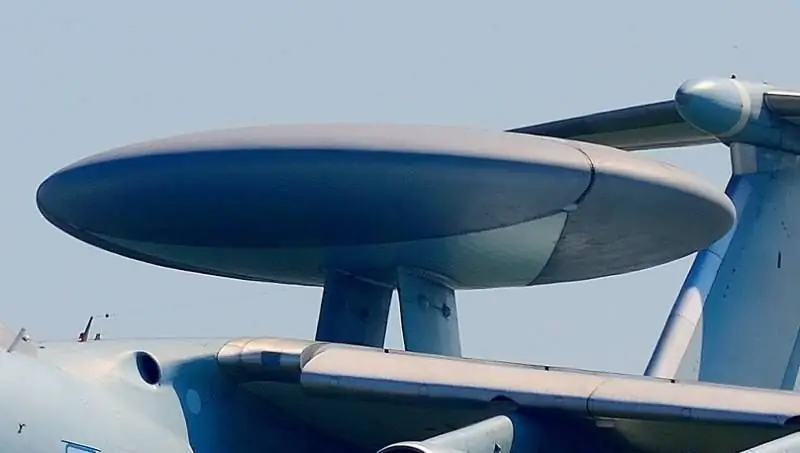
There are three antenna modules inside the fairing. Each module makes it possible to view the space in the 120 ° sector. Thanks to the electronic scanning of the beam, the radar is capable of performing all-round visibility. Cooling of the radiating elements of the radar occurs by the oncoming air flow through special channels.
According to information voiced by the Chinese media, the radar created at Nanjing Research Institute No. 14 is capable of detecting targets at a distance of more than 400 km and simultaneously tracking up to 100 air and surface objects. It is reported that the AWACS aircraft can also be used to fix the launches of ballistic missiles and calculate their flight trajectories. So, during the tests, it was possible to carry out the timely detection of a ballistic missile launched at a distance of 1200 km.
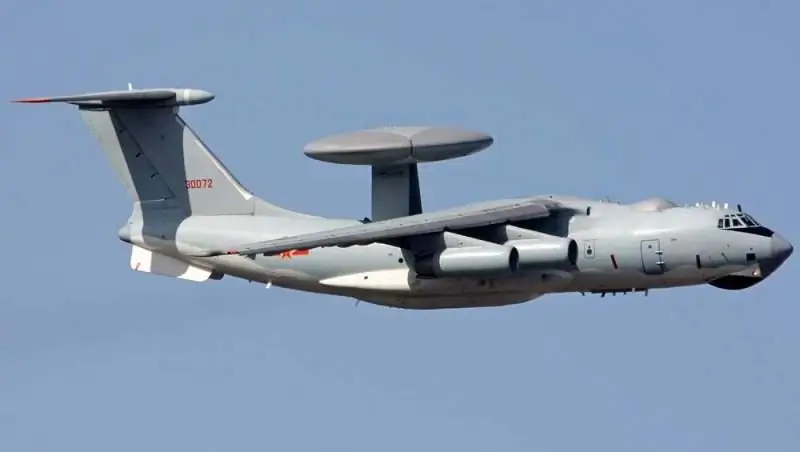
Like the Russian A-50, the Chinese KJ-2000 has a satellite communication antenna in the upper, front part of the fuselage behind the cockpit. There is no reliable information about the possibilities of interaction of the communication equipment of the Chinese AWACS aircraft based on the Il-76MD with ground air defense systems and interceptors, but Chinese sources claim that one KJ-2000 is capable of controlling the actions of several dozen combat aircraft. Operators' workplaces are equipped with color liquid crystal displays, and air target traces are built automatically and using high-performance computing facilities. The working altitude of the patrol is 5000 - 10000 m. The maximum flight range is 5000 km. At a distance of 2000 km from its airfield, the aircraft can remain on patrol for 1 hour and 25 minutes. The maximum flight duration is no more than 8 hours. Unlike the Soviet A-50, the KJ-2000 did not initially have a refueling system in the air, which, given a sufficiently high specific fuel consumption, significantly limits the patrol time.
In total, 4 heavy AWACS and U aircraft were built for the PLA Air Force on the Il-76TD platform. In the past, they often took part in major exercises, and were based on a permanent basis in the eastern province of Zhejiang near the Taiwan Strait. At the moment, the existing KJ-2000 have already been withdrawn from the PLA Air Force.

Judging by the satellite images of the Xi'an factory airfield, in the Shanxi province, which, among other things, specializes in testing, fine-tuning and repair of AWACS aircraft, one KJ-2000 is installed in an “eternal parking lot” along with other samples of aircraft, the construction of which was carried out at different times at the enterprises of Xi'an Aviation. -industrial corporation. Radar equipment was dismantled from the remaining three AWACS aircraft, built on the basis of the Il-76TD, and these machines can be used as transport and flying laboratories.
Back in 2013, information was leaked to the media that work was underway in the PRC on a new heavy AWACS aircraft based on the new heavy military transport aircraft Y-20. This aircraft is often compared to the American Boeing C-17 Globemaster III. A promising AWACS and U aircraft on the Y-20 platform received the designation KJ-3000.
How far this program has progressed is unknown. It is unrealistic to hide such a large aircraft with a radar fairing from space reconnaissance means, and apparently its tests have not yet begun. At the same time, more than a dozen Y-20 transport aircraft have already accumulated at the Xi'an factory airfield, and some of them may well be used to create new AWACS aircraft.
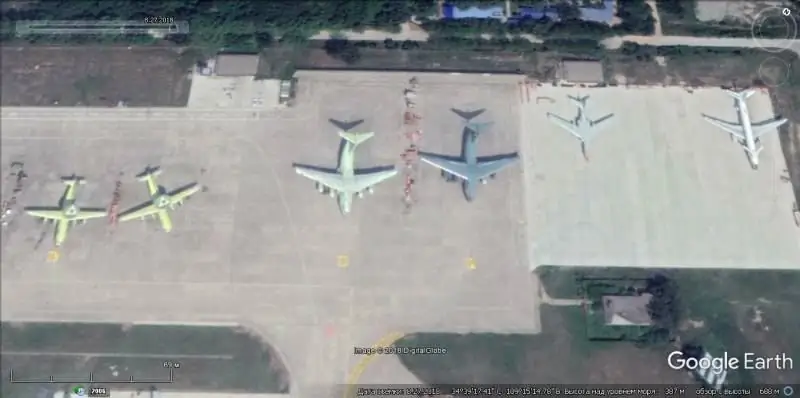
Simultaneously with the development of the "heavy" aircraft for the KJ-2000 radar patrol on the IL-76TD platform, work was carried out in the PRC on the "medium" AWACS aircraft based on a four-engine turboprop medium military transport aircraft (a modernized Chinese version of the An-12). Unlike the USSR, where the serial construction of the An-12 was completed in the 70s, in China, the production of modernized versions of this very successful machine continues to this day. Chinese engineers have developed modern modifications with an extended cargo compartment and economical engines that fully meet modern requirements, and in terms of fuel efficiency they seriously surpass transport aircraft with turbojet engines.
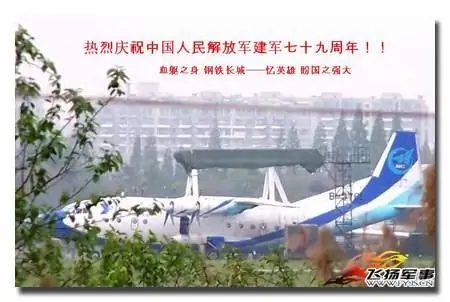
The prototype of the AWACS turboprop aircraft, designated KJ-200, took off for the first time on November 8, 2001. The antenna of the radar with AFAR has a "log-shaped" shape, resembling the enlarged antenna of the Swedish radar radar Ericsson PS-890. In the front part of the radar fairing there is an air intake for cooling the radiating elements by the oncoming air flow.
The first built aircraft AWACS on the basis of the Y-8-200 was actually a "flying laboratory" designed to test the radar complex, and was not equipped with all the necessary set of communications and information display. Serial KJ-200s were to be built on the basis of the more advanced military transport modification Y-8F-600. This model was equipped with more powerful and economical Pratt & Whitney Canada PW150B engines with 6-blade propellers, a "glass" cockpit and additional fuel tanks.
In 2005, tests began on the second pre-production copy. The process of fine-tuning the aircraft's radar and communications equipment went on at a very high rate, until June 3, 2006, the prototype crashed, crashing into a mountain near the village of Yao in Anhui province. High-ranking PLA Air Force officers and prominent designers were killed in the crash. This disaster, which claimed the lives of 40 people, became the largest in the number of casualties in the recent history of the PLA Air Force and seriously slowed down the tests of the KJ-200 aircraft. According to the official version, published after the decryption of the "black boxes", the reason for the loss of aircraft controllability was the imperfection of the anti-icing system. On the following production KJ-200 aircraft, in addition to the changes made to the anti-icing equipment, the tail area was increased.
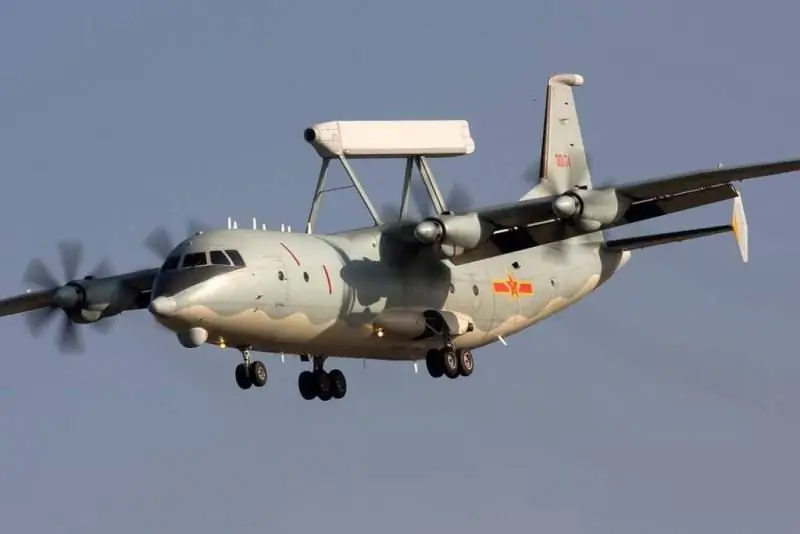
The official adoption of the KJ-200 into service took place in 2009, after the construction of four AWACS aircraft. The KJ-200 aircraft with a maximum take-off weight of about 65 tons, when refueled with 25 tons of aviation fuel, can stay in the air for 10 hours and cover a distance of 5000 km. The maximum flight speed is 620 km / h, the patrol speed is 500 km / h, the ceiling is 10200 m. The crew consists of 4 flight personnel, 6 more people are busy with the maintenance of the radio technical complex.
Compared to the AWACS aircraft based on the Saab 340 and Saab 2000, which also house radars with a "log" antenna, the Y-8F-600 airframe provides large areas for the installation of electronic equipment, operator consoles and personnel rest areas. According to information published in Chinese sources, the radar installed on the KJ-200 is capable of detecting air targets at a distance of more than 300 km. The data on the air situation, after being processed by the radio channel, is transmitted to consumers in the person of the air defense command post and fighter aviation control points. It is believed that one KJ-200 is capable of simultaneously aiming up to 15 interceptors.
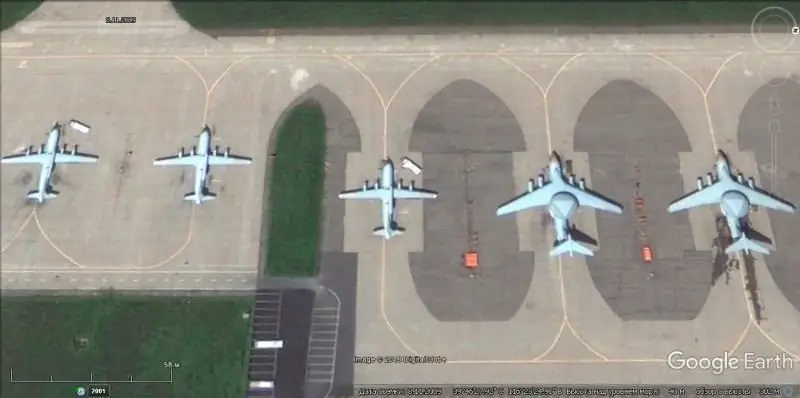
At a major air defense exercise held in August 2009 in northeastern China, the KJ-200 and KJ-2000 aircraft were tested for their ability to control the actions of combat aircraft and anti-aircraft missile systems. The exercises revealed both the strengths and weaknesses of the "air radar posts" that were available in the PLA Air Force at that time. Quite predictably, the KJ-2000 with a more powerful radar and capable of patrolling at higher altitudes detected high-altitude air targets at a range about 30% greater than the radio-technical complex of the KJ-200 turboprop. At the same time, the "tactical" aircraft AWACS KJ-200 was better suited for routine patrol flights. Its more economical engines allowed it to hang in the air for longer, and it itself turned out to be much cheaper to operate and required less time to prepare for a second flight. One of the main disadvantages of the KJ-200, according to experts, is the limited number of communication channels through which information is exchanged with ground command posts and interceptors in the air. In addition, the design features of the "log" antenna with AFAR is the presence of "dead" zones. Since the angle of view of the radar on each side is 150 °, there are non-visible areas in the nose and tail of the aircraft. This forces you to constantly fly "oval" or "eight". But with a sharp change in the course of the AWACS aircraft, or active maneuvering of the target in the horizontal plane, there is a possibility that the tracking will fail. Taking into account the antenna patterns, it is optimal to use two KJ-200 aircraft at the same time, which duplicate each other while making turns.
Despite these shortcomings, the PLA Air Force command ordered an additional batch of KJ-200 AWACS aircraft, at the moment there are 10 machines of this type in service. According to the US military, KJ-200s are actively involved in patrol flights in the northeast of China and over the disputed islands. In February 2017, the pilots of the American base patrol aircraft P-3C Orion announced a dangerous approach with the KJ-200 over the South China Sea.
Over the years that have passed since the adoption of the KJ-200 AWACS aircraft, the Chinese military have managed to appreciate all the advantages and features of this machine. The accumulated operating experience made it possible to form an understanding of what a modern aircraft of the radar patrol and control of the "tactical link" should be like, and to start creating more advanced machines of this class. According to the views of the PLA Air Force command, an AWACS aircraft created on the platform of a medium turboprop military transport aircraft, with moderate operating costs, should be able to operate for a long time at a considerable distance from its base. At the same time, a prerequisite is to equip it with an all-round radar, a system for refueling in the air and a wide range of electronic reconnaissance and jamming equipment.
All these requirements were taken into account when creating the KJ-500 AWACS aircraft, presented to the general public in 2014. Like the KJ-200, the "tactical" KJ-500 is based on the military transport Y-8F-600. The main external differences are the radar round dish, the presence of an aerodynamic ridge in the tail part to compensate for the loss of track stability, and flat antennas of the electronic reconnaissance station.
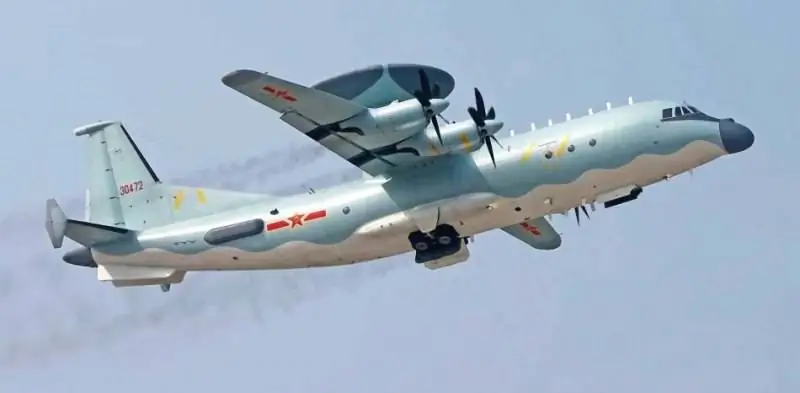
In fact, when creating the KJ-500, the most successful solutions were used that were previously worked out on the KJ-2000 and KJ-200 aircraft, and the disadvantages of these machines were also taken into account. The principle of the location of the radar antenna was borrowed from the KJ-2000, and the operation of the KJ-200 made it possible to work out the most optimal layout of an "average" AWACS aircraft and tactics of use.
A great success in the PRC is considered the creation and launch into serial production of a radio technical complex, the basis of which is a three-coordinate radar with AFAR, which provides electronic scanning in height and azimuth. In this case, the viewing sector of each of the three flat antenna arrays docked in the form of an isosceles triangle is at least 140 °. Thus, they mutually overlap adjacent sectors and provide all-round visibility.
It must be said that the Chinese experts considered an option with a classic rotating radar antenna located in a saucer-shaped fairing. The AWACS aircraft of this configuration has been successfully tested and is being serially built for Pakistan under the designation ZDK-03 Karakorum.
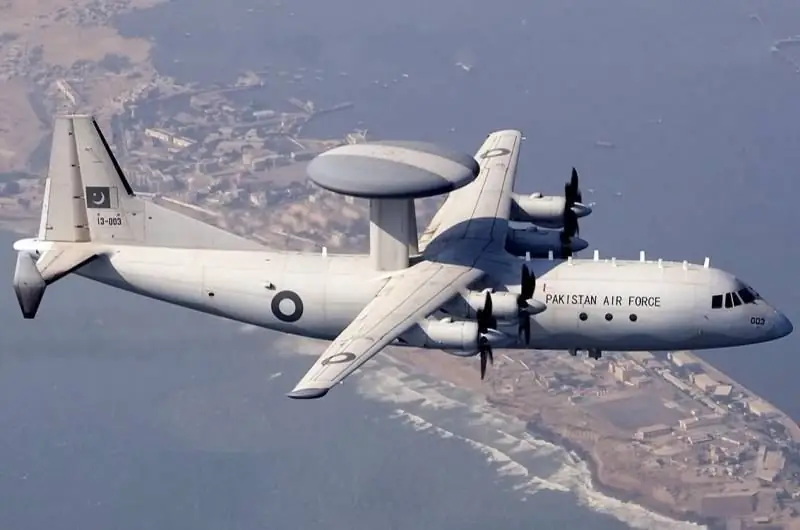
Currently, serial production of the KJ-500 is underway at an aircraft factory in Chengdu, Shanxi province. Based on satellite images, the pace of construction of the KJ-500 aircraft is very high. At the moment, more than 10 vehicles have been delivered to the customer.
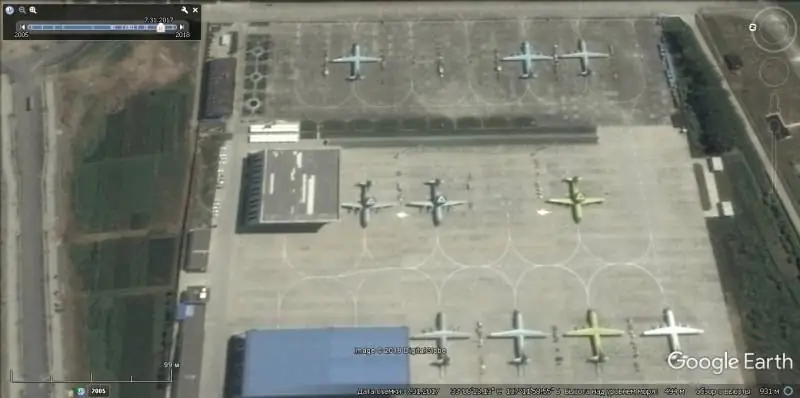
The real characteristics of the KJ-500 are unknown, but it can be assumed that its flight data is at the level of the KJ-200. According to information provided by Global Security, the detection range of the radar with AFAR can reach 500 km, and the number of simultaneously tracked targets has been tripled compared to the KJ-200. The miniaturization of the radioelement base and the successes of Chinese developers in the field of creating compact high-performance computing systems made it possible to equip the KJ-500 with very advanced onboard equipment. A number of Western experts write that in terms of range, noise immunity and the number of communication channels, the KJ-500 can be close or even surpass the latest American E-2 Hawkeye carrier-based aircraft. But at the same time, the Chinese aircraft is much larger and heavier than the "Improved Hawkeye", which allows it to carry additional radio intelligence stations and stay on alert longer.
Although the PRC is developing a heavy "strategic" aircraft KJ-3000, the Chinese military relied on the "tactical" KJ-500, created on a relatively inexpensive Y-8F-600 platform with economical turboprop engines. This approach makes it possible to quickly saturate the troops with AWACS aircraft, push back the detection lines of air targets and increase the efficiency of command and control of air defense forces. Already now, in terms of the number of capable aircraft for early warning and control, China surpasses our country. According to open sources, in 2018, the Russian Aerospace Forces included 5 modernized A-50U and 14 A-50 built during Soviet times. At the same time, it should be understood that most of the old A-50s are close to developing their resource, now they are "real estate" and will not be modernized. In addition, critics of the A-50U program note that when creating an updated radio-technical complex, the share of foreign-made components turned out to be unacceptably large. That in the context of the introduction of a sanctions regime against our country, it can greatly slow down the process of modernization.
At the moment, in the PLA Air Force, the number of KJ-200 and KJ-500 is approaching two dozen, and the combat readiness of these aircraft is very high. Considering the pace of construction of KJ-500 aircraft, it can be assumed that in 5 years their number will double. At the same time, the number of "heavy" KJ-3000 on the platform of the heavy Y-20 transporter is unlikely to exceed 5 units. It is quite obvious that the Chinese military leadership, having sufficient financial resources, nevertheless showed pragmatism and made a bet not on unique in their characteristics, but extremely expensive heavy AWACS and U aircraft (the Soviet A-50 cost about 2 times more than a strategic bomber Tu-160), and for cheaper and mass "medium" airborne radar surveillance and control systems.
After Israel's refusal to cooperate in the creation of a joint radio engineering complex for the A-50I aircraft, the PRC leadership set the developers the task of localizing the production of all electronic equipment components for AWACS aircraft in the PRC. In 2014, it was announced that this task was completed. On the new Chinese AWACS aircraft, computers and software developed and manufactured in China are used in computing systems. To unify and simplify interaction on different types of aircraft, unified communication and information systems are used. This approach allows you to get rid of foreign dependence, reduce the cost of production, facilitate maintenance and improve information security.
At the beginning of 2017, not very high-quality photographs of the Chinese deck-based AWACS KJ-600 aircraft appeared on the network, on the basis of which its appearance was reconstructed.
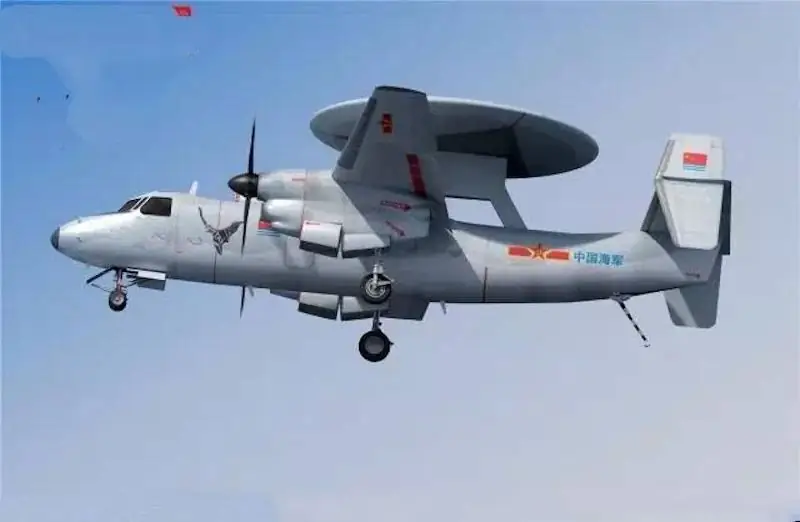
Earlier in the PRC, a flying laboratory JZY-01 based on the transport Y-7 (a copy of the An-26) was seen. This "flying stand" was intended to test the radio-technical complex and design solutions, which were later planned to be used in the creation of a carrier-based AWACS aircraft. In total, two prototypes were built. If the first prototype, apart from the radar antenna, had no visible differences from the Y-7 aircraft, then on the second prototype the tail unit in its configuration resembles the American Hawkeye. At the moment, this aircraft is parked at the Xi'an factory airfield.

It is not known how far the Chinese designers have advanced in creating a carrier-based radar patrol aircraft, but a model of such a machine has already appeared on the "deck" of a concrete copy of an aircraft carrier in the vicinity of the city of Wuhan.

According to the data announced in the PRC, the maximum take-off weight of the KJ-600 aircraft will not exceed 25 tons. Its maximum speed can reach 700 km / h, and the speed during patrolling is 350-400 km / h. The practical flight range of the KJ-600 is about 2500 km, which will make it possible to conduct combat duty at a distance of 500 km from the take-off point for about 2-2.5 hours. It is not known when the KJ-600 AWACS will actually enter the combat squadrons, but the West believes that this machine will be able to be based not only on Chinese aircraft carriers, but can also be adopted by the PLA Air Force. A radar patrol aircraft with a shortened take-off and landing is capable of operating from field airfields in the interests of tactical aviation and front-line air defense systems.
At the moment, the duties of an "air radar picket" on the Chinese aircraft carrier "Liaoning" are assigned to the Z-18J AWACS helicopters. The Z-18 helicopter is a further development of the Z-8, which in turn is a licensed copy of the SA 321 Super Frelon heavy transport helicopter. The radar antenna is located in the area of the hinged tail frame and lowers to the operating position when the vehicle is in the air. The detection range of air targets is 250-270 km.
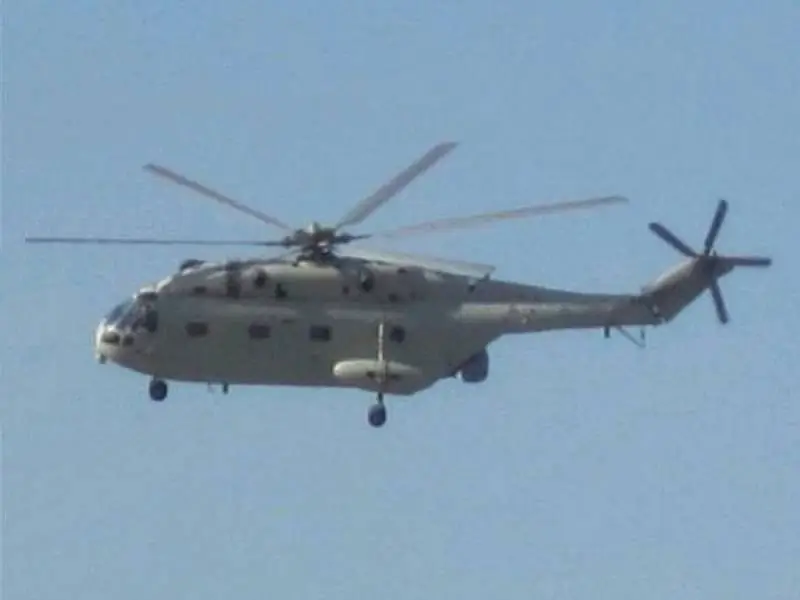
Another area being developed in China is the creation of heavy AWACS unmanned aerial vehicles. In 2012, the Xianglong UAV ("Soaring Dragon") took off in Chengdu. Although in China this drone is compared to the American RQ-4 Global Hawk, the Soaring Dragon is inferior in range and flight duration to the American heavy UAV.
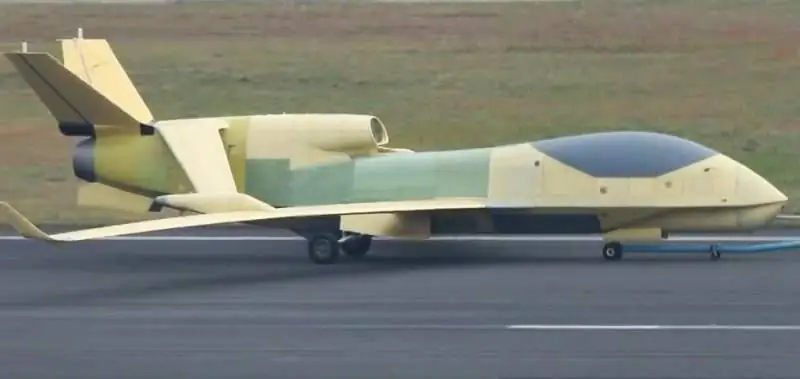
UAV Xianglong is equipped with an original wing shape, which combines a closed wing of a normal and reverse sweep. The wing consists of two planes located one above the other and connected by curved rings. This wing shape has a high lift and can significantly reduce fuel consumption and increase flight duration. With a takeoff weight of about 7,500 kg, the Chinese device is capable of rising to an altitude of 18,300 meters and covering a distance of more than 7,000 km. The maximum speed is 750 km / h. It is reported that the main element of the payload will be a radar with an active phased array conformal type. In addition, the unmanned aerial vehicle can be used to relay information from ground, ship and air radars.
In 2015, information appeared on the network that tests of the UAV Divine Eagle ("Divine Eagle") began in Shenyang. Compared to the Soaring Dragon, this is a much larger and heavier unit. The prototype had a twin hull with one turbojet engine in the middle and two keels.
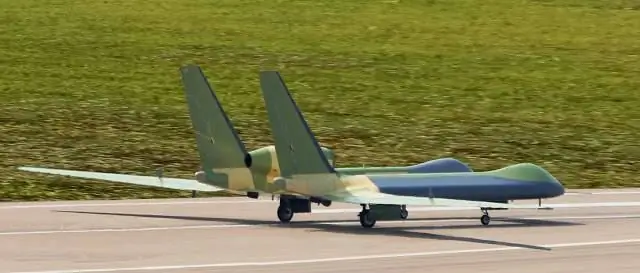
This scheme was chosen in order to increase the carrying capacity. The Chinese media write that 7 AFAR antennas are placed on the outer surfaces of the "Divine Eagle". The transmission of radar information should take place in real time via radio relay and satellite communication channels.
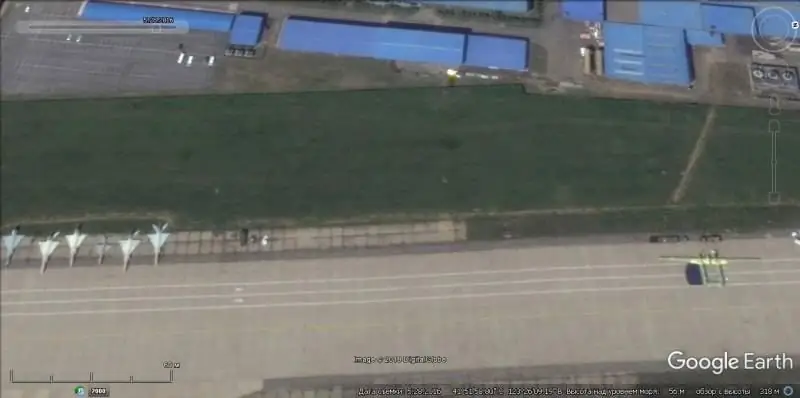
Based on the available photographs, the length of the UAV can be from 14 to 17 m, and the wingspan is 40-45 m. The maximum flight speed is about 800 km / h, the ceiling is 25 km. Take-off weight - 15-18 tons. Currently, it is the largest Chinese drone, its size can be judged by satellite images.
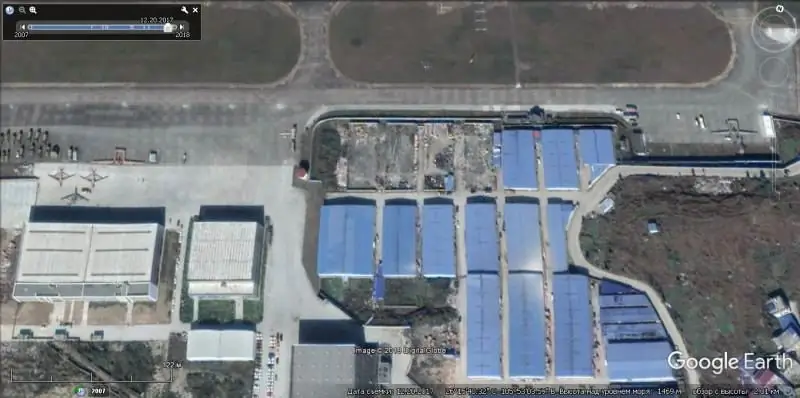
It is not known what combat missions heavy Chinese UAVs are capable of performing at the moment. But apparently, the drones mentioned in this publication are already being built in series and are in operation. The PLA Air Force's heavy unmanned squadron is deployed at Anshun Air Force Base in Guizhou Province. The UAV control center with satellite communication repeaters is also located here.
At the moment, China has made very good progress in the field of creating heavy unmanned aerial vehicles, and in this regard it occupies one of the leading positions in the world. Apparently, the UAVs of the long-range radar patrol in the PRC are planned to be used during long patrol flights over the ocean and where there is a high risk of losing a manned AWACS aircraft. At the same time, in the event of a collision with a technologically advanced enemy, uninterrupted transmission of broadband digital streams over highly vulnerable high-frequency channels will be problematic, and the drone itself can be easily shot down by enemy fighters.






